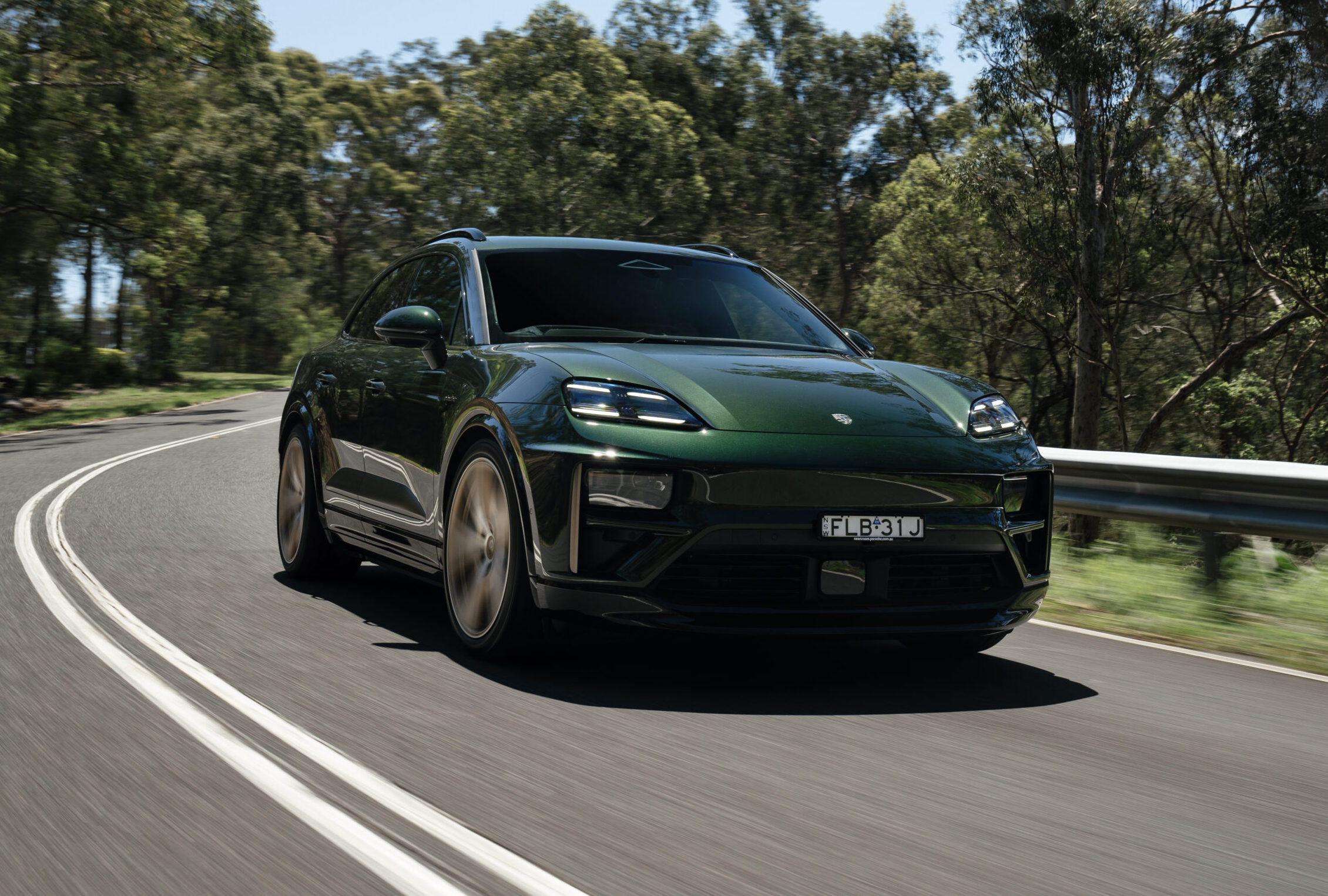Meet the seventh generation of Bavaria’s big businessmobile. Codenamed G30, the new BMW 5 Series aspires to leadership of the executive luxury segment Germany dominates. Has Munich managed it?
WHAT IS IT? Large rear-drive sedan, premium-priced, opulent, and brimming with the latest tech. Launch line-up for Australia includes four- and six-cylinder petrol and diesel engines.
WHY WE’RE TESTING IT Sedans are being swamped by SUVs, but the arrival of a new 5 Series is still a major moment. So the international media launch in Portugal was a must-be-there event.
MAIN RIVALS The arch-enemy of the 5 Series is the Mercedes-Benz E-Class. This is a long-running rivalry, but there are other worthy contenders in this lucrative category. The Audi A6, Jaguar XF and new Volvo V90 all aim to tempt the same kind of customer, while for those who prefer Asian to European flavours there are the Lexus GS and Infiniti Q70 to consider.
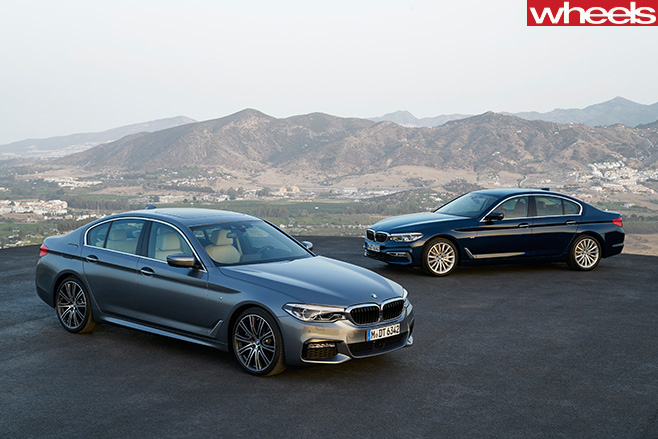
PLUS: Handling and ride; six-cylinder drivetrains; interior design and quality MINUS: Rear seat; some semi-autonomous tech more annoying than helpful
THE WHEELS REVIEW Johann Kistler doesn’t hesitate before answering. “Driving dynamics,” says the BMW 5 Series project head, after being asked where his new car’s biggest advantage over the Mercedes-Benz E-Class lies.
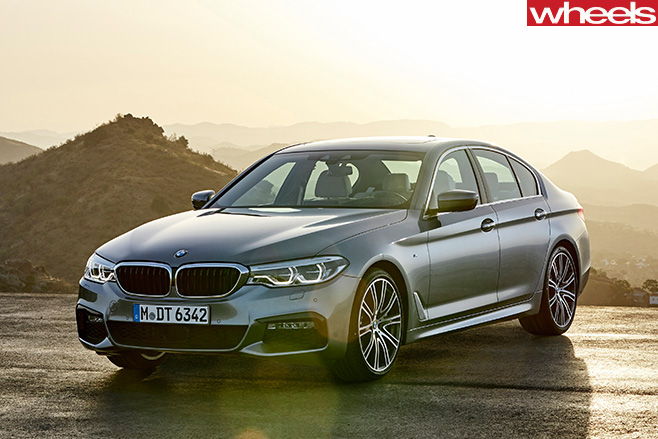
Predictable responses from someone who’s worked for BMW for 38 years, a cynic would say. But Kistler, it happens, is right. The seventh-generation 5 Series, codenamed G30, is a lovely thing to drive. Its electrically assisted steering is truly outstanding, and the chassis delivers a terrific blend of agility, composure and comfort.
It’s a bigger car than before. Overall length is up 36mm, but the increases in height, width, wheelbase and tracks are all single-figure small. Despite the growth, the new G30 weighs anything up to 100kg less than the F10 it replaces. Almost every external panel is aluminium, and the new suspensions – double A-arm front, five-link rear – also include more aluminium than ever.
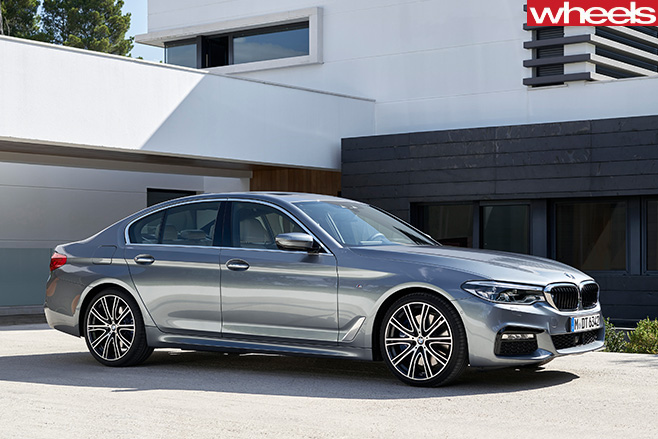
Completing the launch line-up will be the 520d and 530d, equipped with 2.0-litre four-cylinder and 3.0-litre six-cylinder turbocharged diesels. These are not new. Though manual transmissions are an option in some models in some European markets, for Australia the new 5 Series will come only with an eight-speed automatic.
Prices increase quite steeply. In round figures, the $93,900 520d rises $9000, the $108,900 530i is $10,000 more than the 528i, the $119,900 530d is $4000 up over 535d and the $136,900 540i is a whopping $19,000 more than the 535i. But all models are much more richly equipped than before. Adaptive dampers, for example, will be standard in everything except the 520d. BMW Australia claims the retail value of the additional kit far outweighs the price hikes.
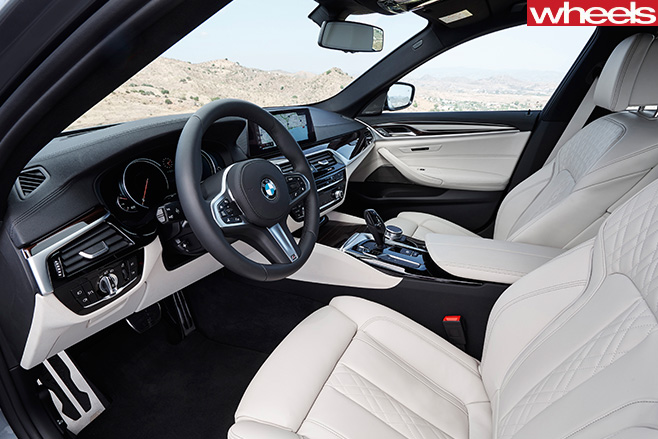
From the outside, the side view is possibly the new 5 Series’ best angle. It highlights the faster angle of the car’s rear glass, which contributes to a more tapered and toned tail. In the right light you’ll also notice the ‘twisted ribbon’ character line running from the front wheelarch, through the doorhandle recesses, to fade into the base of the C-pillar. From the front, new daytime running light strips point to the car’s big kidney grille.

The diesel was fitted with BMW’s xDrive all-wheel-drive system, which won’t be coming to Australia. It also had Luxury suspension, which will be a no-cost alternative to the standard M Sport package, and BMW’s Integral Active Steering rear-wheel steering system, which is likely to be optional. And the 540i lacked the active anti-rolls bars of the Adaptive Drive system that will be standard in Australia. It also had rear-steering, a technology that’s incompatible with Adaptive Drive, and rode on 19-inch wheels instead of the 20-inchers bound for Australia.
Still, the fundamental quality of the new 5 Series chassis was obvious. This big sedan steers with rare precision, is beautifully fluent when changing direction and rides wonderfully well. Some of the roads around Lisbon were as poor as anything you’ll find in Australia, and the 530d’s Luxury suspension did a brilliant job of isolating occupants from the bumps without depriving the driver of a sense of control.

Like the W213 E-Class, the G30 5 Series also brings a new level of semi-autonomy to the driving experience. While the active cruise control and some other driver-aid features were impressive, the self-steering ability of the BMW was as annoyingly inconsistent as that in the Mercedes-Benz.
But with the aids switched off, and the ride stripped bare, it was always obvious that the new 5 Series is the executive car for those who enjoy driving.
SPECS Model: BMW 540i Engine: 2998cc in-line 6cyl, dohc, 24v, turbocharged Max power: 250kW at 5500 to 6500rpm Max torque: 450Nm at 1380 to 5200rpm Transmission: 8-speed automatic Weight: 1670kg 0-100km/h: 5.1sec (claimed) Fuel economy: 6.7L/100km Price: $136,900 On sale: March 2017






